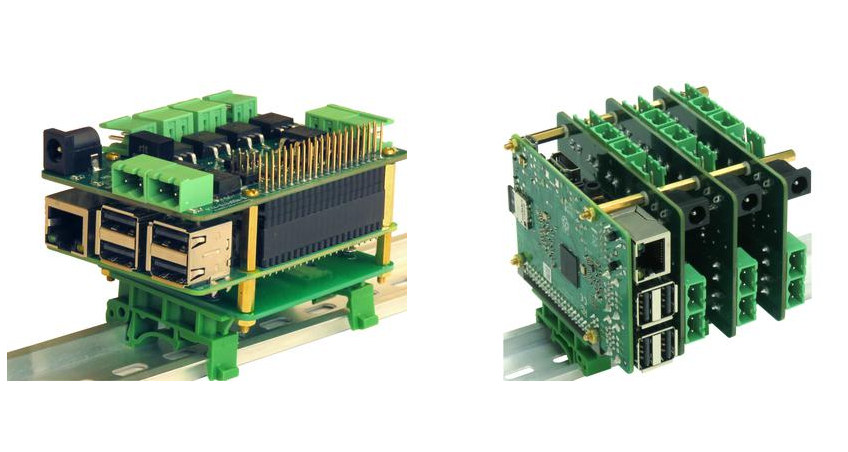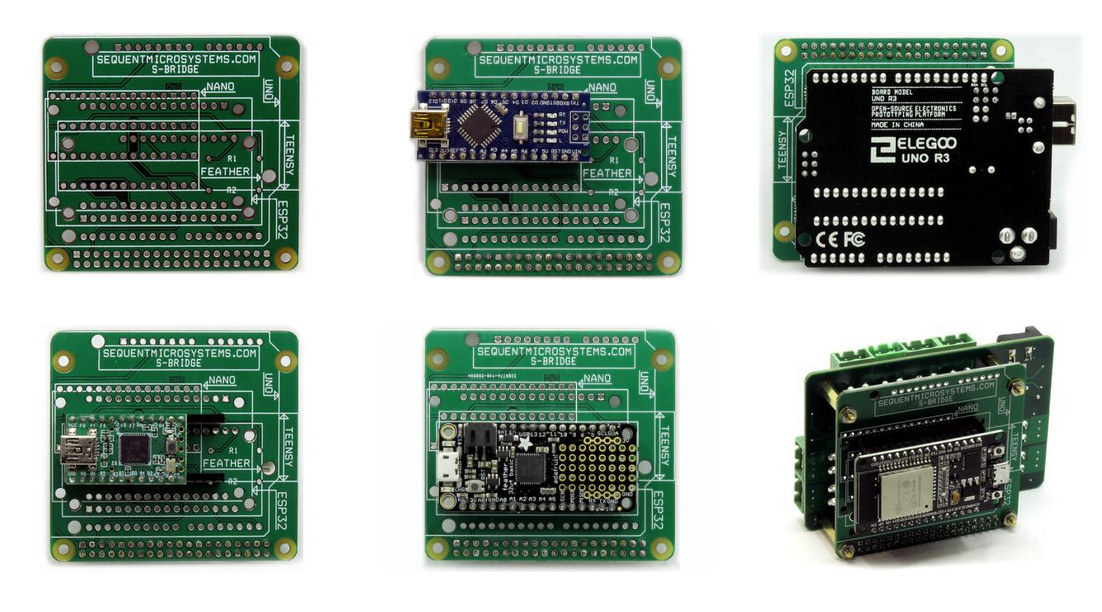Using inexpensive relays to switch AC or DC loads work well in most cases, but those relays will be quickly damaged when faced with high DC voltages, fast switching times, or other endurance requirements for which MOSFET’s are better suited, and that’s why MOSFET power supplies are found in 3D printers.
Sequent Microsystems has made a habit to provide specialized Raspberry Pi HAT with relays or terminals for resistance temperature detectors that are stackable to supports a larger number for I/O or sensors. The company is now back at it with the 8-MOSFET stackable, DIN-rail mountable board that works not only with Raspberry Pi SBC, but also popular Arduino, ESP32, and other maker boards.

8-MOSFET key features and specifications:
- Eight MOSFETs with status LEDs
- 4 optimized for high-current (HC) loads up to 10 A / 24 VDC
- 4 optimized for high-voltage (HV) loads up to 2 A / 240 VDC
- Pluggable connectors
- Host interface – I2C via 40-pin Raspberry Pi header
- DIN rail mountable
- Stackable with up to seven additional 8-MOSFETs & MCU board
The company provides command-line tools & Python drivers to control the board. Check out the docs directory for a user’s guide and the schematics. We can see how it compares to the company’s relay board in the table below.


Sequent Microsystems launched the project on Crowd Supply with a $1,000 funding target. Rewards start at $30 for the early bid MOSFET-8 board with all necessary mounting hardware, connectors, and two jumpers, while the S-Bridge adapter and DIN-rail mounting kits all cost $10. Shipping is free to the US, and adds $7 to $35 to the rest of the world depending on the select rewards. Delivery is expected to start at the end of February 2021.

Jean-Luc started CNX Software in 2010 as a part-time endeavor, before quitting his job as a software engineering manager, and starting to write daily news, and reviews full time later in 2011.
Support CNX Software! Donate via cryptocurrencies, become a Patron on Patreon, or purchase goods on Amazon or Aliexpress




